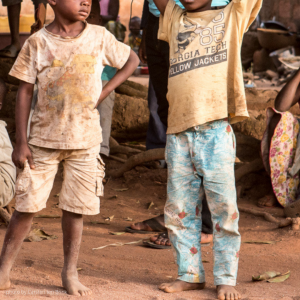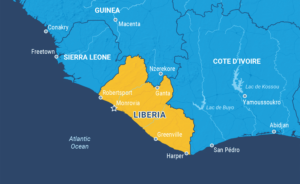Cybercrime and Online Child Sexual Exploitation & Abuse in West Africa

Understanding the Threat, Closing the Gaps, Protecting the Future

In recent years, West Africa has experienced unprecedented growth in internet connectivity. Affordable smartphones, expanding mobile networks, and social media platforms have transformed how people communicate, learn, and do business. But this rapid digital expansion has also created fertile ground for cybercrime, particularly the Online Child Sexual Exploitation and Abuse (OCSEA).
From grooming and sextortion to livestreamed abuse and trafficking-enabled exploitation, OCSEA is one of the most urgent, yet least understood, threats facing children in the region. This article examines the drivers, patterns, and impacts of OCSEA in West Africa, and offers concrete recommendations for governments, technology companies, schools, and communities.


Why West Africa is Vulnerable, is due to several factors combine to create a high-risk environment for OCSEA:
- Mobile-first internet adoption – Many users go online for the first time through smartphones, often without basic safety knowledge or parental controls.
- Youth-heavy demographics – With a significant proportion of the population under 18, more children are online and potentially exposed to predators.
- Economic pressures – Poverty and unemployment can lead to risky online activities, including “survival sex” or participation in illicit schemes.
- Cross-border digital activity – Regional integration and porous borders allow offenders to operate across jurisdictions with relative ease.
- Limited law enforcement capacity – Cybercrime units exist in some countries but often lack specialized training, equipment, and resources.
Common Forms of OCSEA in West Africa: OCSEA is not a single crime, it is a spectrum of harmful activities, including:
- Grooming – Offenders befriend children online to gain trust before exploiting them.
- Sextortion – Threatening to share sexual images unless the child provides more content or money.
- Non-consensual sharing of intimate images – Often by peers or former partners.
- Livestreamed abuse – Facilitated by instant payment systems and encrypted apps.
- Trafficking for online exploitation – Recruitment through fake jobs or scholarships.
- CSAM distribution – Production, possession, and sharing of child sexual abuse material.
![]()

Key platforms used are Social media apps, gaming platforms, encrypted messaging services, short-video platforms, and cloud storage.
How Cybercrime Fuels OCSEA: OCSEA is often intertwined with broader cybercrime networks:
- Financial exploitation – Extortion payments through mobile money, prepaid cards, or cryptocurrency.
- Identity theft – Data from breaches used to target or impersonate children.
- Malware and spyware – Covertly accessing personal files and images.
- Criminal marketplaces – Encrypted “dark web” platforms facilitating content exchange.
Regional Risk Amplifiers: Unique regional factors heighten vulnerability:
- Shared devices within families – Weak privacy safeguards.
- Unregulated public internet access – Cybercafés and community Wi-Fi.
- Language gaps – Limited content moderation in local languages.
- Cultural stigma – Discourages reporting and seeking help.
- Conflict and displacement – Children in crisis situations are easier targets.
Impact on Victims and Communities: The consequences are severe and far-reaching:
- Mental health harm – Trauma, depression, anxiety, suicidal thoughts.
- Educational disruption – School dropouts due to stigma or relocation.
- Economic impact – Extortion payments and lost opportunities.
- Community trust erosion – Fear of online spaces and institutions.
Legal and Policy Landscape: Many West African countries have cybercrime and child protection laws, often aligned with:
- ECOWAS cybercrime frameworks.
- African Union Malabo Convention.
- International standards like the Budapest Convention.
![]()
However, there remain huge gaps: inconsistent definitions of CSAM-(Child Sexual Abuse Material), slow cross-border cooperation, weak victim-centered procedures, inadequate and sustainable enforcement capacity and investigations.
Recommendations for action, sacrosanctly rest as an obligation on you, me, the government, faithbased organisations, civil/military security forces, organised-private-sector, traditional institutions community social-sectors and everyone. These obliged recommendations must also activate the following steps in these sociogovernmental and private spectrum:
Governments
- Update laws to include grooming, livestreamed abuse, and modern CSAM definitions.
- Invest in national cybercrime units with digital forensics capability.
- Create 24/7 reporting and response lines linked to police and child protection services.
- Fast-track cross-border investigations through ECOWAS cooperation.
Law Enforcement & Judiciary
- Adopt child-friendly interview and evidence-handling protocols.
- Train officers and prosecutors on OCSEA-specific investigation techniques.
- Collaborate with financial intelligence units to track illicit payments.
Technology Companies & Telecoms
- Implement robust age verification and safer direct messaging defaults.
- Moderate content in local languages.
- Provide transparent and easy-to-use reporting tools.
- Retain minimal but useful metadata for lawful investigations.
Schools & Parents
- Integrate digital safety education into school curricula.
- Encourage open, non-judgmental communication with children about online risks.
- Teach practical steps for blocking and reporting harmful content.
Civil Society & Faith Leaders
- Raise awareness through community campaigns in local languages.
- Partner with hotlines and victim support services.
- Promote survivor-centered, non-blaming approaches.
West Africa’s digital transformation offers enormous opportunities—but without decisive action, it also risks deepening the threat of online child sexual exploitation and abuse. The solution lies in a multi-stakeholder approach that combines stronger laws, better enforcement, technology-driven safeguards, and community-level awareness.
Protecting children online is not only a legal duty, it is an investment in the region’s social stability and economic future.






